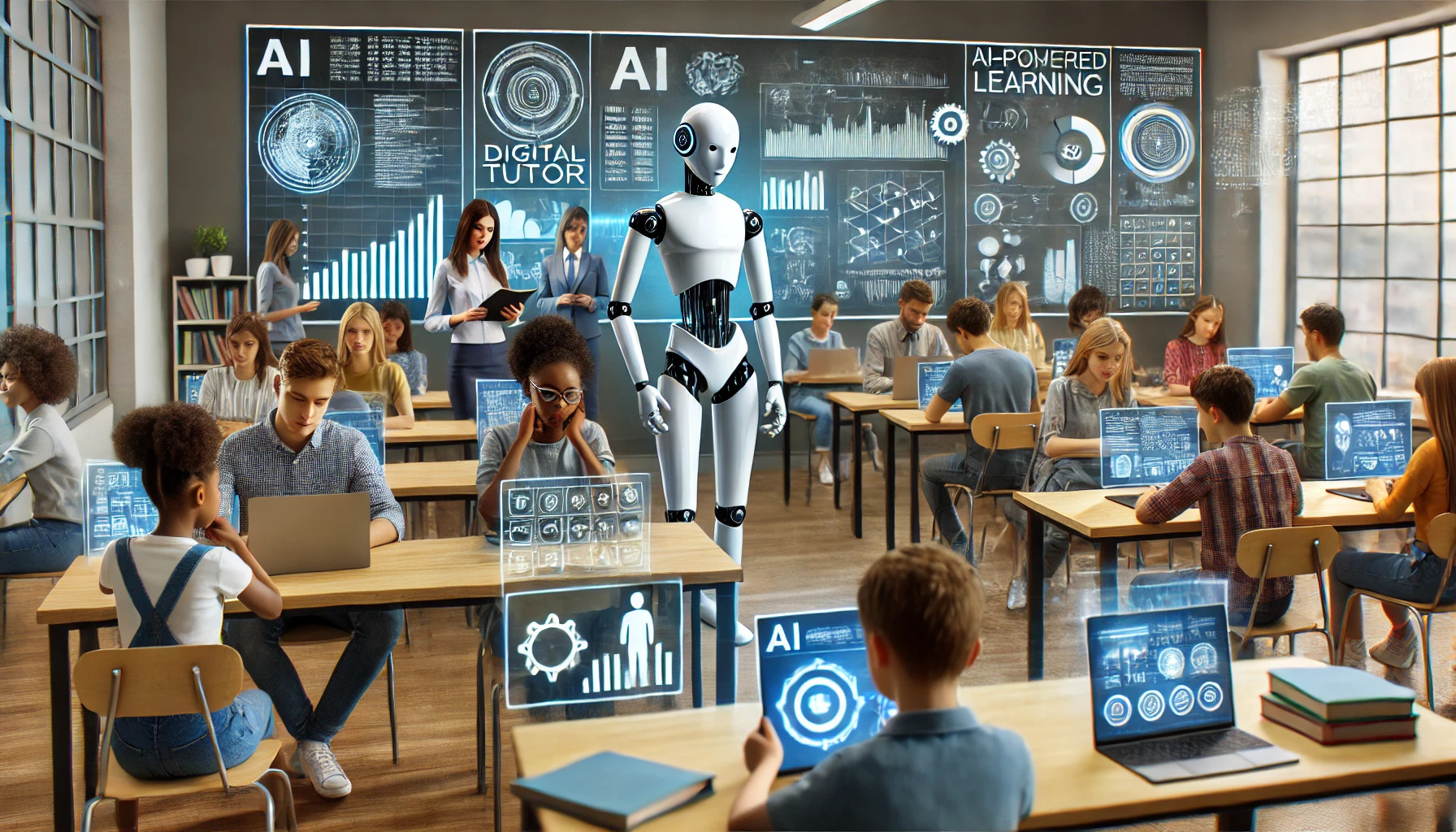
Artificial Intelligence (AI) is no longer confined to the realm of science fiction; it has steadily integrated into various sectors, with education being one of the most promising fields. From intelligent tutoring systems to personalized learning experiences, AI is revolutionizing how students learn and how educators teach. In this blog post, we’ll explore the significant ways AI is transforming education, its benefits, challenges, and what the future holds for learning in the age of AI.
1. Personalized Learning at Scale
One of the most significant advantages of AI in education is its ability to provide personalized learning experiences. Traditionally, teachers have struggled to meet the needs of every student in a classroom due to varying learning speeds and abilities. AI-powered platforms, however, can analyze students’ progress and tailor lessons to match their unique needs.
-
Adaptive Learning Platforms: AI systems like DreamBox or Knewton adjust the difficulty level of tasks in real-time, based on a student’s responses. These platforms use machine learning algorithms to track a student’s performance, identify knowledge gaps, and modify content to ensure optimal learning.
-
Personalized Feedback: AI can offer instant, specific feedback on assignments, enabling students to learn from mistakes and progress at their own pace. For example, an AI tool might highlight areas of weakness in a student’s math homework, providing targeted practice problems to help them improve.
2. AI-Powered Tutors: Anytime, Anywhere
Traditional tutoring requires time, effort, and, often, financial investment. AI has the potential to democratize access to high-quality tutoring by offering around-the-clock support through virtual tutors.
-
Chatbots and Virtual Assistants: AI-powered chatbots like Carnegie Learning’s MATHia can assist students by answering questions, offering explanations, and providing additional practice problems when teachers are unavailable.
-
AI in Language Learning: Platforms such as Duolingo use AI to assess a learner’s proficiency level and adjust exercises to fit their needs, ensuring that every lesson is both challenging and achievable.
3. Streamlining Administrative Tasks for Educators
Teachers often spend a significant amount of their time on administrative tasks—grading papers, tracking attendance, and preparing lesson plans—leaving less time for direct interaction with students. AI can help alleviate some of this burden.
-
Automated Grading: AI systems can grade assignments, essays, and even some types of exams, reducing the time teachers spend on these tasks. Natural Language Processing (NLP) algorithms, for example, can evaluate open-ended questions or written responses, offering quick and accurate assessments.
-
Predictive Analytics: By analyzing data from students’ academic performance, AI can help predict trends and identify students at risk of falling behind. This allows educators to intervene early and offer additional support where needed.
4. The Role of AI in Special Education
AI holds immense promise in special education, where individualized support is often needed. By tailoring content and support mechanisms to the specific needs of students with disabilities, AI tools can create more inclusive learning environments.
-
Speech Recognition and Text-to-Speech: AI-powered tools can help students with learning disabilities by converting text into speech or translating spoken words into text. This opens up new opportunities for students with dyslexia or other language-related challenges.
-
Behavioral Analysis: AI can monitor students’ behavioral patterns and adjust content or suggest interventions when students show signs of frustration or disengagement. This is particularly valuable in classrooms that serve students with autism or ADHD.
5. Challenges and Ethical Considerations
While the potential of AI in education is vast, it also brings certain challenges and ethical considerations:
-
Privacy Concerns: AI systems often collect vast amounts of personal data to function effectively. Ensuring that this data is handled securely and that student privacy is maintained is crucial.
-
Bias and Equity: If AI systems are trained on biased data, they may perpetuate inequality by offering different educational opportunities to students based on their background or demographic. It’s essential that AI tools be developed and tested for fairness and equity.
-
Teacher Dependency on Technology: As AI becomes more integrated into education, there is a risk that teachers may become overly reliant on technology, potentially diminishing the human connection and creativity that is vital in the classroom.
6. The Future of AI in Education
Looking ahead, the role of AI in education is expected to grow even further. We could see more sophisticated AI systems that integrate various learning styles, monitor students’ emotional well-being, and provide more immersive experiences through virtual and augmented reality.
-
AI-Enhanced Classroom: Imagine a classroom where AI works seamlessly alongside teachers, offering real-time insights into student performance, creating dynamic learning environments, and providing continuous feedback to ensure that every student reaches their potential.
-
Lifelong Learning: As the job market evolves, so too will the need for continual skill development. AI-powered platforms could support lifelong learning, providing adults with personalized learning paths that adapt to their career needs and aspirations.
Conclusion
The integration of AI into education presents both immense opportunities and challenges. By personalizing learning, improving access to tutoring, streamlining administrative tasks, and supporting special education, AI is set to change the landscape of education as we know it. However, it is vital that we approach these changes with a focus on equity, privacy, and the preservation of human connection in learning. As we move into the future, AI will undoubtedly play a key role in shaping how we learn and teach, making education more accessible, efficient, and effective for everyone.
Let’s embrace AI, but let’s do it wisely.





Leave a Reply